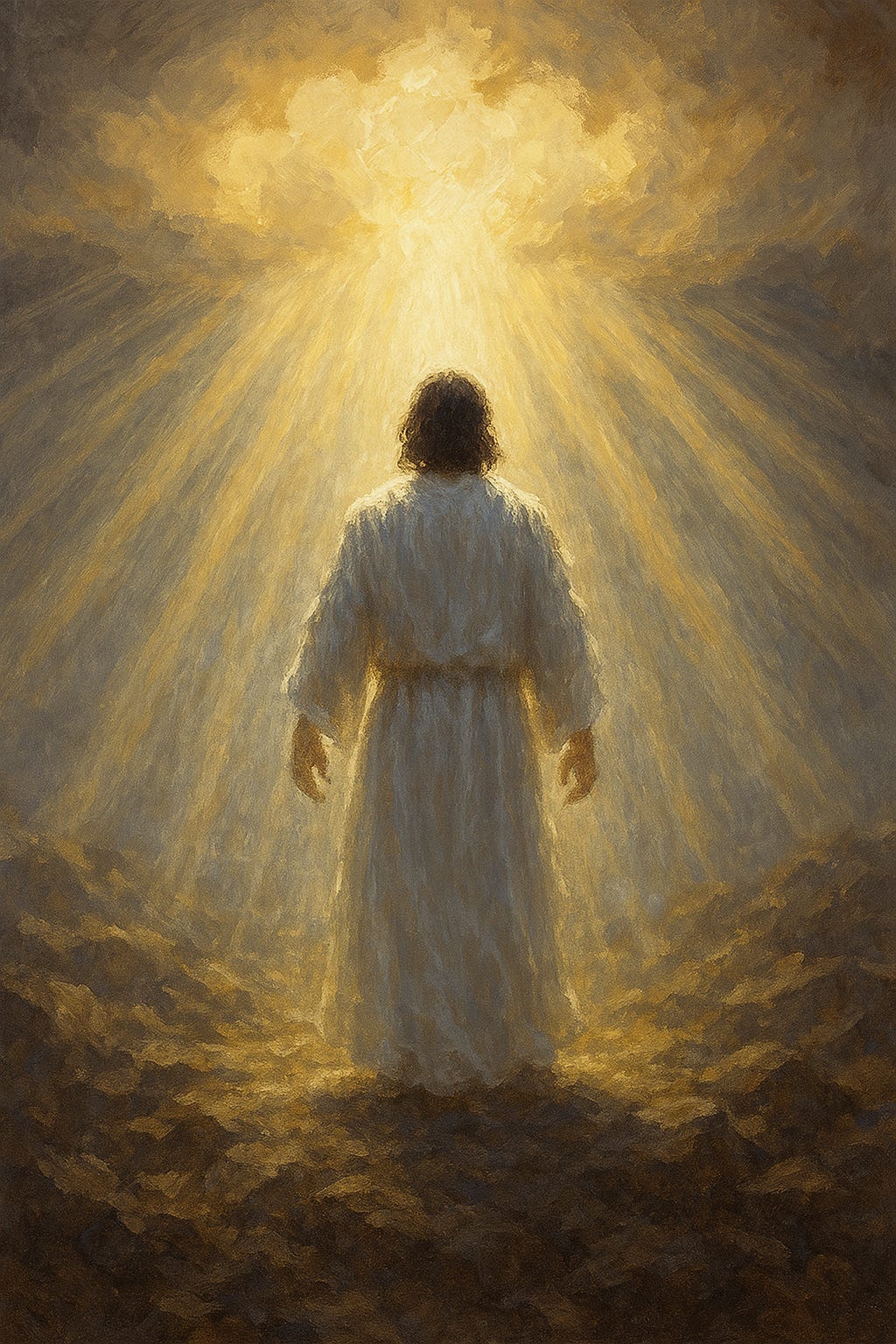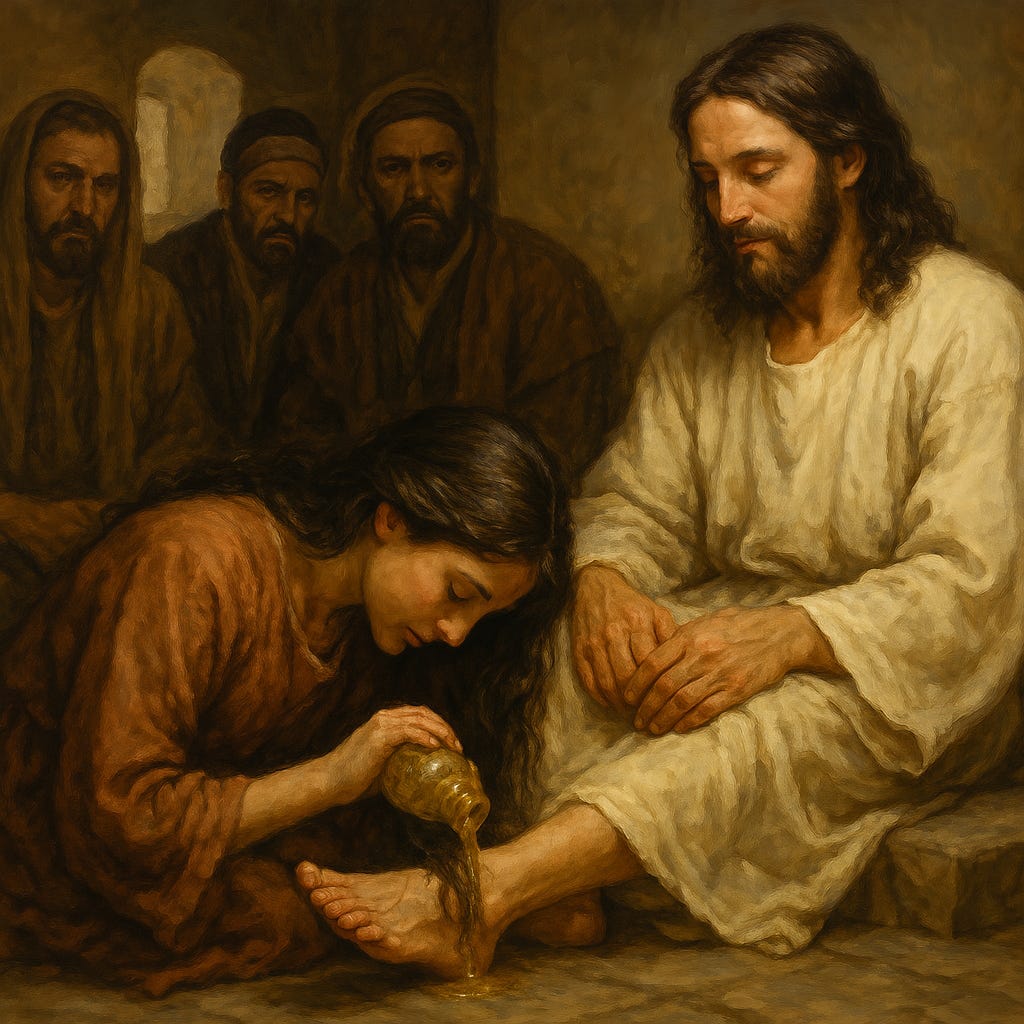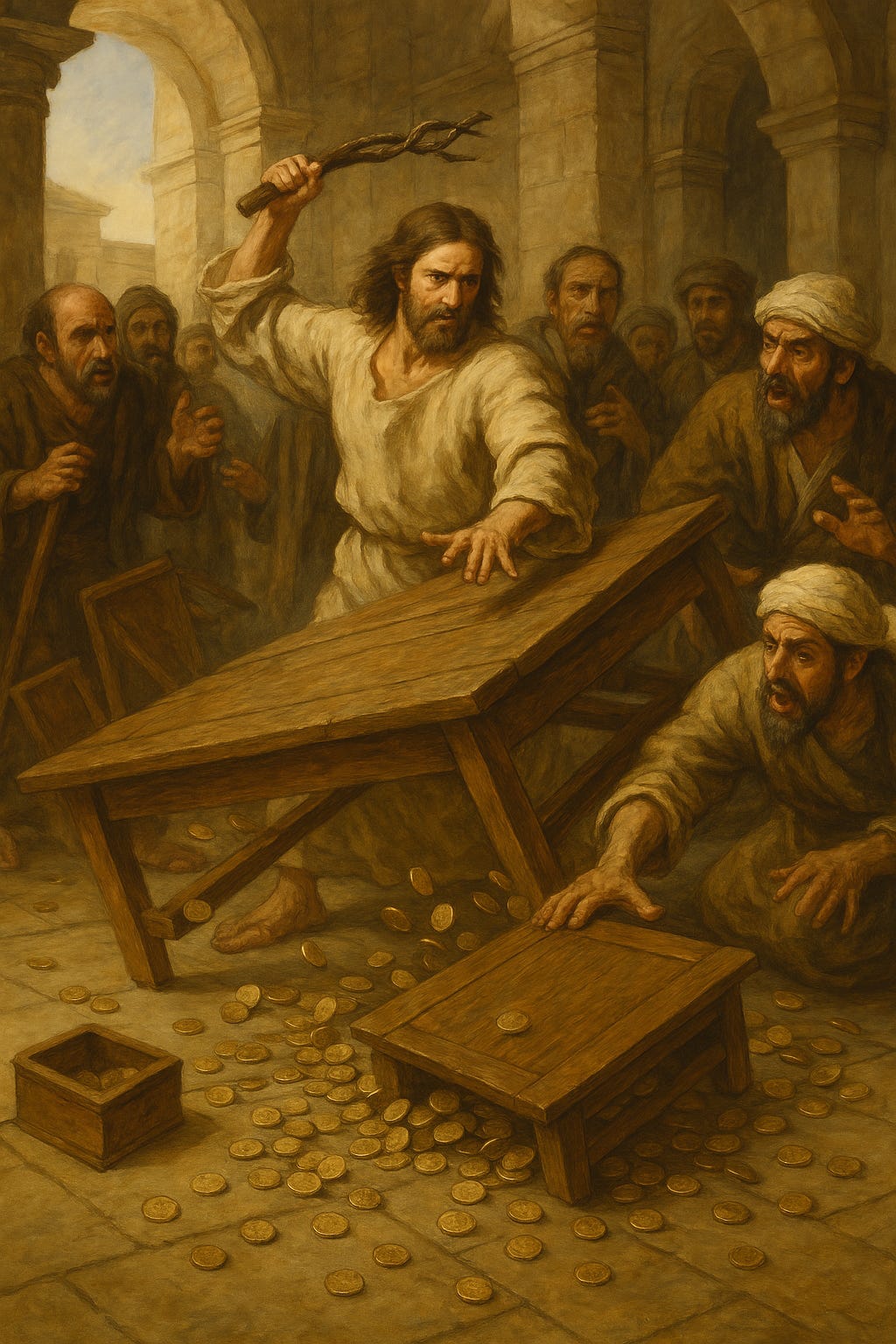He Made Himself Nothing: The Descent of Holy Week
At the summit of Mount Hermon, Jesus stood transfigured—His face blazing like the sun, His garments radiant with uncreated light. Beside Him stood Moses and Elijah—the Law and the Prophets—conversing with Him about the path ahead: His exodus, His coming departure through suffering, death, and resurrection.
And the voice from the cloud declared:
“This is My beloved Son. Listen to Him.”(Luke 9:35)
This mountaintop moment echoed another: Mount Moriah, where Abraham lifted the knife over Isaac—until God intervened, providing a ram in the thicket. But Abraham had spoken prophetically:
“God Himself will provide the lamb.”(Genesis 22:8)
That Lamb now stood before them, blazing with glory—but ready to descend.
In response to Abraham’s faith, God swore an oath:
“Because you have done this and not withheld your son… I swear by Myself… through your seed all nations will be blessed.”(Genesis 22:16–18)
And after Abraham’s obedience, God made a covenant sealed not with conditions, but with His own unbreakable character:
“When God made His promise to Abraham, since there was no one greater for Him to swear by, He swore by Himself… saying, ‘I will surely bless you and give you many descendants.’ And so after waiting patiently, Abraham received what was promised.”(Hebrews 6:13–15)
The writer of Hebrews then draws us in:
“Because God wanted to make the unchanging nature of His purpose very clear… He confirmed it with an oath. God did this so that… we who have fled to take hold of the hope set before us may be greatly encouraged. We have this hope as an anchor for the soul, firm and secure.”(Hebrews 6:17–19)
From Hermon’s heights, Jesus descended:
“Because the Sovereign Lord helps me, I will not be disgraced. Therefore have I set my face like flint, and I know I will not be put to shame.” Isaiah 50:7 (NIV)
“As the time approached for him to be taken up to heaven, Jesus resolutely set out for Jerusalem.”Luke 9:51 (NIV)
To Jerusalem, riding a donkey, the mount of mercy
“Rejoice greatly, Daughter Zion! Shout, Daughter Jerusalem! See, your king comes to you, righteous and victorious, lowly and riding on a donkey, on a colt, the foal of a donkey.” Zechariah 9:9 (NIV)
.
To Bethany, where His feet were washed with perfume and tears.
To the upper room, where He stooped even lower, washing His disciples’ feet—including the one who would betray Him.
And then—He fed them.
“Take, eat; this is My body… Drink, all of you; this is My blood…”(Matthew 26:26–28)
The spotless Lamb of God gave Himself—not just to them, but to the world.
“The bread that I will give for the life of the world is My flesh.”(John 6:51)
He became food for the world—the Creator offering Himself as nourishment for His creation. The eternal Word allowed Himself to be broken and consumed, so that those who devour and destroy might be reborn in peace.
This was no accident. No last-minute rescue plan.
“You were ransomed… with the precious blood of Christ, like that of a lamb without blemish or spot. He was foreknown before the foundation of the world, but was made manifest in these last times for your sake.”(1 Peter 1:19–20)
He descended further still:
To Gethsemane, where He drank the cup of sorrow.
To Golgotha, where He bore shame, not just pain.
To the grave, and even to the depths, where He shattered the silence of death.
“He made Himself nothing, taking the form of a servant… and became obedient to death—even death on a cross.”(Philippians 2:7–8)
And then—He rose.
In Revelation 5, heaven weeps because no one is found worthy to open the scroll—the purpose of God sealed in mystery. But then:
“Weep no more; behold, the Lion of the tribe of Judah… has conquered… Then I saw a Lamb, standing as though it had been slain… And He went and took the scroll from the right hand of Him who sat on the throne.”(Revelation 5:5–7)
The Lion is the Lamb.
The descent leads to dominion.
The Lamb slain from the foundation of the world is also the only One worthy to unfold its redemption.
This is the shape of Holy Week:
From transfiguration to crucifixion.
From radiant glory to rejection and sorrow.
From the humility of service to the silence of the grave.
From the breaking of bread to the breaking of death.
From the garden to the throne.
He made Himself nothing—so that we might become children of God.
He became food for the world—so that the world might be made whole.
He was slain from before the foundation of the world—so that the story of creation could be healed.
Having followed the Lamb’s descent from glory to grave, here is the sacred rhythm of Holy Week—each day holding its weight in the unfolding story of redemption.
Holy Week: Day by Day
Palm Sunday
The King enters in humility.
Jesus rides into Jerusalem on a donkey as the people shout, “Hosanna!” and lay palm branches at His feet.
The city stirs. The crowds rejoice. But their expectations are about to be overturned.
“Behold, your King is coming to you, humble and mounted on a donkey.”(Matthew 21:5)
Holy Monday
A house cleansed. A tree cursed.
Jesus enters the temple and drives out the money changers.
He also curses a barren fig tree—a living parable of fruitless religion.
“My house shall be called a house of prayer, but you make it a den of robbers”(Matthew 21:13)
Holy Tuesday
Confrontation and prophecy.
Jesus teaches in the temple, speaks parables against the religious elite, and delivers the Olivet Discourse—a vision of the end to come.
The tension builds. Every word widens the rift with the authorities.
“You will see the Son of Man seated at the right hand of Power and coming on the clouds of heaven.”(Matthew 24:30)
Holy Wednesday(Spy Wednesday)
The fragrance of devotion. The stench of betrayal.
At Bethany, a woman breaks a jar of pure nard—costly perfume—and anoints Jesus.
Judas objects:
“Why this waste?”
But Jesus silences him:
“She has done a beautiful thing. She has anointed My body beforehand for burial.”
Shortly after, Judas goes to the chief priests and agrees to betray Jesus for thirty pieces of silver.
Love pours itself out in worship.
Greed calculates value and plots death.
“Wherever the gospel is preached… what she has done will also be told in memory of her.”(Matthew 26:6–16, John 12:1–8)
Maundy Thursday
The last supper. The lowest place.
Jesus gathers with His disciples to share the Passover meal.
He washes their feet, including the feet of Judas.
He breaks bread and offers the cup:
“This is My body… This is My blood.”
In the garden of Gethsemane, He prays in agony.
And there, under torchlight, Judas arrives with a kiss.
“Not My will, but Yours be done.”(Luke 22:42, John 13)
Good Friday
The Lamb is slain.
Jesus is tried, mocked, flogged, and crucified.
He is lifted up between two criminals. Darkness covers the land.
He breathes His last and is laid in a tomb.
“It is finished.”(John 19:30)
Holy Saturday
Silence. Waiting.
Jesus lies in the tomb.
His followers hide in fear.
But the silence is not empty—it is the pause before victory.
Tradition holds that He descends to the dead to proclaim freedom to the captives.
“He was put to death in the body but made alive in the Spirit. In that state He went and made proclamation to the spirits in prison.”(1 Peter 3:18–19)
Easter Sunday
The tomb is empty. The King is risen.
At dawn, the women find the stone rolled away.
Jesus appears—first to Mary, then to the others.
Grief turns to joy.
The Lamb who was slain now lives and reigns.
“Do not be afraid. I am the First and the Last… I was dead, and behold, I am alive forevermore.”(Revelation 1:17–18)






